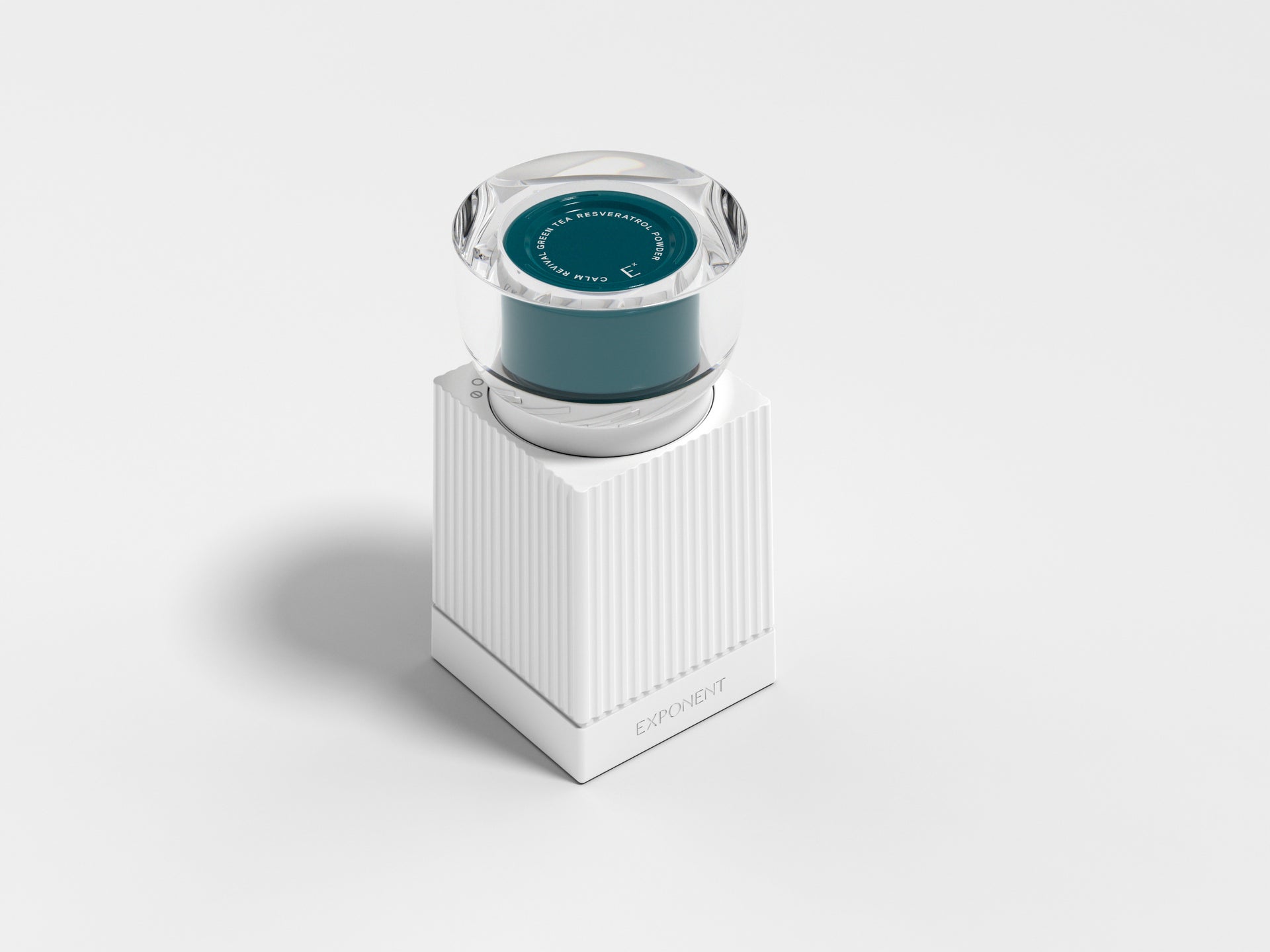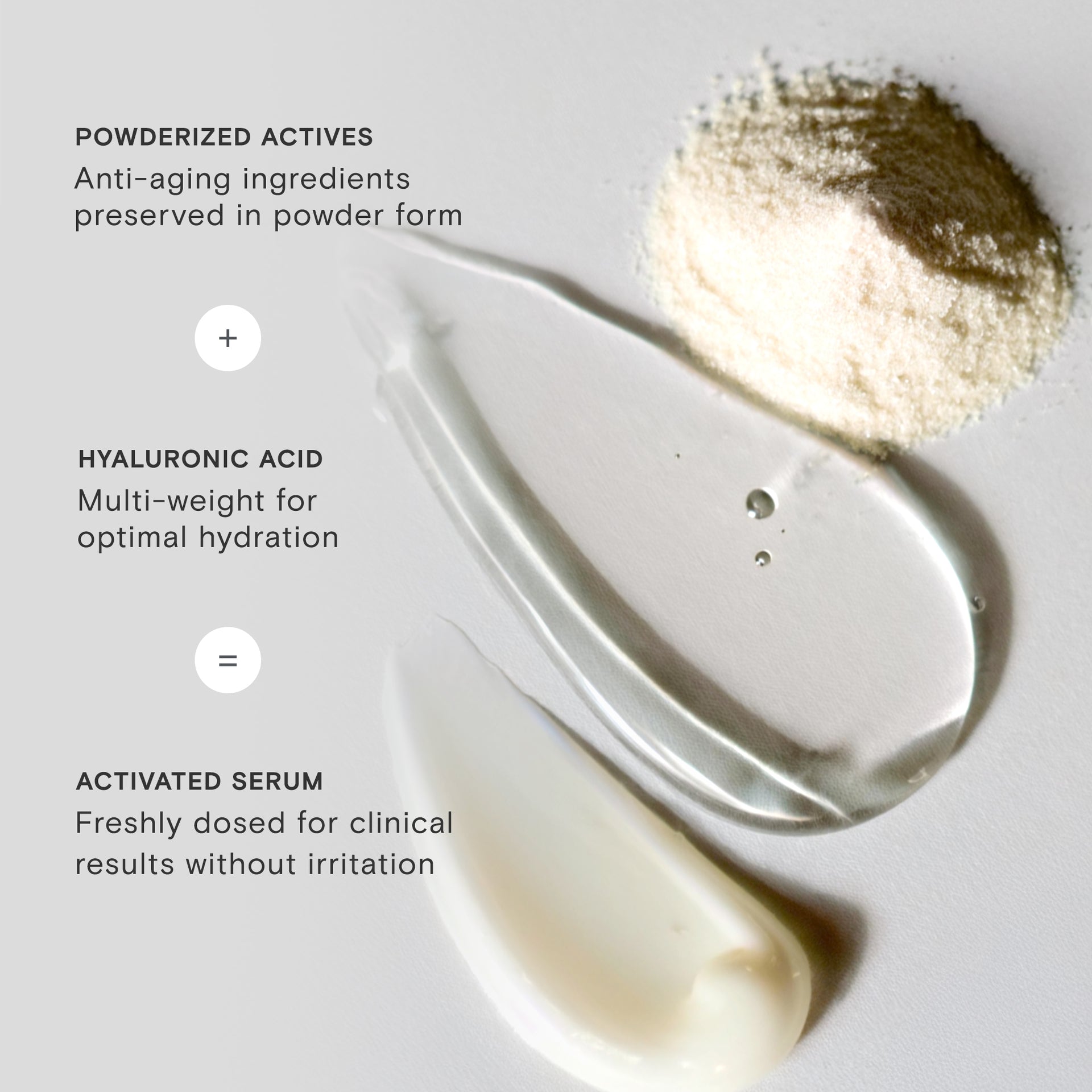We’re all for cozy knits and hot cider but when it comes to fall skincare, it's about braving the elements. Here's how to prep, what to swap, and why it’s time to switch it up.
There's a reason our skin acts out during cooler seasons. A study published in the British Journal of Dermatology shows that NMF (natural moisturizing factor) levels are reduced in the winter compared to the summer due to decreased temperatures and humidity. As the weather transitions from hot to cold, the drastic drop in humidity means dry, stale air and drier, hangrier skin. Between your skin producing less oil in colder months and indoor heating stripping what little moisture there is, skin health takes a toll — think dry, flaky, and frustrated. [1]
“During summer, there’s often more humidity to help moisture stay in the skin and protect its barrier,” says Dr. Nancy Samolitis, board-certified dermatologist. “In the cooler months, the air gets drier outside and inside with the operation of heaters. When skin starts losing moisture, the barrier can get disrupted, causing increased sensitivity, dryness, and irritation.” [2]
Here are 5 expert-approved tips to help your skin make a smooth, fall-proof transition.
1. Start with a gentle cleanser
A good cleanser has two objectives — to cleanse your skin of dirt and impurities and to do so without damaging it. Easier said than done. Beauty columnist for The New York Times and founder of Ellis Brooklyn, Bee Shapiro, says it’s a formulation challenge. “A good cleanser must whisk away the bad stuff, yet magically leave your skin microbiome (that is, microorganisms that naturally live on your epidermis) relatively unscathed.”
When it comes down to it, it’s all about the pH.
A cleanser that mimics the skin’s naturally acidic pH (5.5) will be more gentle on your skin’s acid mantle which maintains skin health and prevents bacterial infections, explains dermatologist Dendy Engelman. Ideally, you should look for cleansers with a pH close to your skin's natural level – usually between 4.5 – 6. Products with a lower pH than 4.5 may be too acidic and harsh for those with dry or sensitive skin. [3]
How do you know if a cleanser is gentle enough?
“The best way to tell whether or not the cleanser is pH balanced is to see if it bubbles or foams, which means it’s a high pH cleanser,” says Dr. Rita Linkner." “If it's cream-based and gentle, then it’s a low pH wash.” So, the fewer the suds, the lower the pH, in most cases. Low pH cleansing formulas to look out for include gel, cream, and “milk” varieties. Additionally, products marked “pH balanced” have been formulated to mimic the skin’s natural pH level, and won’t raise your skin’s pH level. [4]
2. Avoid over-cleansing
This goes for all seasons but especially the fall as over-cleansing strips away natural oils, making your skin even drier. Over-cleansing also destroys the skin barrier function, which in turn allows bacteria to enter and cause breakouts, redness, irritation, neurodermatitis and decreased natural resistance to UVA and UVB rays.
It’s also important to recognize how clean is too clean. The problem is that “the definition of ‘clean’ can be subjective,” says Dr. Engelman. “If, after washing, your skin feels tight, dry or inflamed, that means the cleanser or cleansing mechanism was too strong, because, in addition to cleansing, the surfactant has broken down a significant number of bonds in your skin that form your skin barrier.” That “squeaky clean” sensation many of us strive for is, she said, an unhealthy state for our skin to be in.
3. Reduce use of retinoids and harsh exfoliants
Don't stop exfoliating (cell turnover is important!) but be sure to cut back as over-exfoliating irritates and over-stimulates the skin.
While summer skin calls for exfoliating two to three times a week, in the fall, New York-based dermatologist Dhaval Bhanusali recommends switching to a gentler formula just once a week and dropping alcohol-based toners. “Exfoliating cuts to the pore,” explains Bhanusali. “In the summer you exfoliate more because your skin is more oily.”
Bhanusali finds that those with acne-prone skin often see benefits from cutting back on scrubs and toners. “One of the most common causes of adult acne in the winter months is over-exfoliation. If you over-exfoliate, there’s an excess secretion of oil.” [5]
4. Swap in a thicker moisturizer
Say goodbye to lightweight, oil-free moisturizers and hello to a heavier hydrator. Thicker moisturizers or creams made with ceramides are key to replenishing the skin during colder months. Those ceramides, as New York City board-certified dermatologist Sejal Shah explains, are especially crucial because they serve as a support system for your skin barrier. "When the skin lacks ceramides, the barrier becomes compromised, resulting in dryness and irritation."
Adding an extra layer of hydration to your routine is another great way to prevent skin dehydration, explains Connecticut-based dermatologist Mona Gohara. "As chill settles in, water heads out for a host of reasons," she explains.
"You layer clothes as it gets colder; you should layer on hydration, too."
Her recommendation is to add a hyaluronic acid-based serum or sheet mask to your skin-care routine alongside a heftier moisturizer. [6]
5. Supplement with Vitamin C
“Vitamin C works double duty in the colder months and helps combat SPF rays that aren’t fully blocked by your sunscreen,” says Anne Chapas, MD, a board-certified dermatologist in New York City. “It also evens skin pigmentation, which helps to boost collagen production resulting in a brighter complexion.” [2]
Looking for the bright stuff? Check out our Brightening Boost Vitamin C Serum - clinically proven to help minimize dark spots and improve texture and brightness.
Top Fall Skin Concerns
Quick tips for 4 common skincare concerns so you can get back to leaf-peeping.
DRY SKIN
Swap out your lightweight, summer moisturizer for a thicker one packed with ceramides. Ceramides are fatty oils that naturally occur in our skin and make up the skin’s protective barrier — and since the fall weather can slowly chip away at that protective barrier, it’s important to replenish it with your moisturizer.
DULL SKIN
Add a vitamin C-infused skincare product to your fall skincare regimen to help soothe and repair sun-damaged summer skin and brighten your complexion. Being a potent antioxidant, it also helps improve skin tone, stimulate collagen production and reduce the appearance of wrinkles and fine lines.
IRRITATED SKIN
Look for calming, cooling ingredients like green tea, chamomile, and Centella Asiatica (tiger grass), all anti-inflammatory agents that not only neutralize redness, but also soothe, hydrate, and protect the skin barrier from damage.
TIRED SKIN
Give tired skin a pick-me-up with cooling tools like a soothing ice roller or stash some under-eye gels in the fridge for extra TLC. “The best products to keep in the fridge would be the ones that help shrink tissues or constrict blood vessels,” says Debra B. Luftman, MD, a California-based dermatologist. “After being in the fridge, they have added benefits because the coolness helps reduce swelling and constrict dilated blood vessels that cause puffiness and dark rings to look worse.” While all eye creams will get a little kick from being in the fridge, gels make the biggest difference since they can hit a lower temperature than their heavier, creamy counterparts.[7]
Footnotes
- Esther Akutekha. How To Transition Your Skin Care Routine For Fall. Huffington Post. September 2021. |How To Transition Your Skin Care Routine For Fall. The Real Preneur. Sept. 2021. Source|Source
- Saleah Blancaflor. 7 Derm-Approved Ways to Change Up Your Skincare Routine for Fall. Real Simple. August 2019. Source
- Bee Shapiro. Are You Overwashing Your Face? The New York Times. October 2018. Source
- Kristin Howard. Why You Need to Switch to a Low pH Cleanser, According to Dermatologists. Byrdie. August 2020. Source
- The Real Preneur. How To Transition Your Skin Care Routine For Fall. Sept. 2021. Source
- Sarah Kinonen and Nicola Dall'asen. 4 Dermatologist Secrets to Creating the Perfect Fall Skin-Care Routine. Allure. August 2021. Source
- Maria. Why You Should Keep These Products In Your Fridge. The Glow Edit. March 2018. Source





